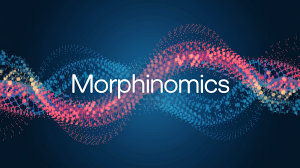Morphinomics: The Recursive Framework of Structural Transformation
About this ebook
Rooted in its etymology—"Morph-" (Greek: μορφή, morphē, meaning "form, shape, structure") and "-nomics" (Greek: nomos, meaning "law, system")—Morphinomics establishes a self-regulating system where structure and transformation operate recursively across all fields of knowledge.
Core Principles of Morphinomics
Morphology → The study of form and structure across systems
Recursive Evolution → Axiomatic transformation and systemic reconfiguration
Quantum Equilibrium → The interplay between atomic adaptation and structural harmonization
Linguistic Standardization → The integration of dynamic linguistic frameworks into evolving structures
Systemic Adaptability → Ensuring that structures remain coherent while continuously evolving
Key Insights and Applications
Beyond Static Analysis → Morphinomics shifts from traditional structural studies to a dynamic, recursive understanding of transformation
Interdisciplinary Evolution → Unifying fields such as linguistic evolution, quantum mechanics, and biological adaptation
Scalability Across Domains → Applied to both microscopic (atomic) and macroscopic (linguistic and systemic) transformations
Key Application Areas
Linguistic Evolution → Understanding how languages self-organize and transform over time
Quantum Mechanics → Modeling atomic and subatomic transformations in recursive systems
Biological Adaptation → Examining evolutionary changes through self-referential systemic organization
Computational Intelligence → Implementing AI-driven models that adapt dynamically to structured and unstructured data
By integrating axiomatic linguistic standardization, definitional structuring, atomic reconfiguration, and quantum equilibrium, Morphinomics provides a comprehensive model for understanding change, evolution, and adaptability across all scientific and intellectual disciplines. This groundbreaking framework redefines transformation as a recursive, systemic process, ensuring that knowledge, energy, and matter evolve in a harmonized, scalable model.
About the author
Ronald Legarski is a visionary systems theorist, interdisciplinary researcher, and architect of recursive structural transformation frameworks, specializing in morphological intelligence, systemic adaptability, and recursive knowledge structuring. As the Founder of SolveForce and Co-Founder of Adaptive Energy Systems, Legarski has pioneered self-organizing, recursive models that integrate structured knowledge systems, quantum mechanics, and linguistic evolution.
As the creator of Morphinomics, Legarski introduces a revolutionary framework that unifies structural transformation, linguistic standardization, atomic reconfiguration, and dynamic adaptation into a singular, evolving knowledge system. His research explores AI-driven morphological modeling, blockchain-assisted systemic standardization, and recursive hierarchical transformation, ensuring coherence and adaptability across all disciplines.
With expertise spanning computational linguistics, quantum mechanics, artificial intelligence, formal logic, and adaptive systems modeling, Legarski’s work redefines structural transformation through recursive evolution and interdisciplinary synthesis. His leadership in Adaptive Energy Systems applies Morphinomics principles to AI-powered knowledge structuring, quantum-assisted adaptation models, and systemic resilience frameworks, while SolveForce continues to advance AI-driven taxonomic classification, telecommunications, and decentralized knowledge structuring.
Through his research, writing, and technological innovations, Ronald Legarski pioneers a recursive, interdisciplinary approach to structural transformation, ensuring universal adaptability, systemic coherence, and scalable morphological intelligence. His vision for Morphinomics establishes a universal, dynamic framework for understanding transformation and evolution across scientific, linguistic, biological, and computational systems, creating an ever-adapting, self-organizing model of structured intelligence.








